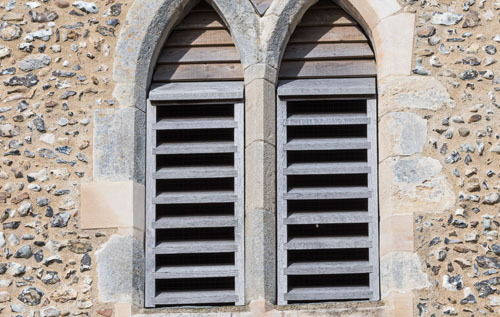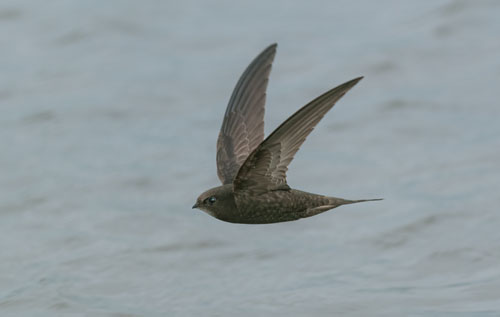Nestboxes for swifts to be installed in church tower
Local naturalist and wildlife photographer Alan Dixon has been given permission to install swift nestboxes in the tower of St Mary’s, Reepham.

The swift nestboxes will be installed behind the louvre openings on St Mary’s church tower. Photo: Alan Dixon
Initially, 16 nestboxes will be fitted in time for this year’s returning birds; there is the potential for at least 48 in total.
They will be installed in the space behind the louvred openings in the tower. The existing wire mesh will be replaced with a closed box that has a specifically sized hole that allows access to swifts but excludes other species that may otherwise try and use them.
To accelerate the process of attracting them, swift calls will be played from the tower from 7 May to mid-July. Once the first swifts start using the tower this can be stopped.
The swift is one of the most remarkable of all birds and is, like many of our wild birds, declining in number, said Mr Dixon.
“It is one of the last summer migrants to arrive in the UK and one of the first to leave. Their ‘screaming parties’ around buildings is one of the iconic sounds of summer.
“Swifts are our fastest flying bird, in level flight, and are supremely adapted to a life on the wing; they only land to build a nest and raise their young.
“They feed, drink, preen, sleep, collect nesting materials and, yes, even mate on the wing.
“Incredibly, a young swift will, after leaving its nest for the first time, fly non-stop for nearly three years.
“Our swifts migrate to southern Africa after leaving here in July and August, returning to the same nest site the following year. They nest under the eaves of roofs, particularly of old buildings with pantiles.”
One of the reasons for their decline is improvement carried out to these spaces which makes them inaccessible.
Many of the buildings around the Georgian market square in Reepham had swifts nesting in the roofs until recently.
For further information about this project, contact Alan Dixon by email.
For more information about swifts and how you can help them, visit Swift Conservation, a website devoted to these remarkable birds.
To find out more about the charity that provides advice about the conservation of burial sites and supports volunteers who look after and maintain them, visit Caring for God’s Acre.

Swift flying over water. Photo: Alan Dixon
